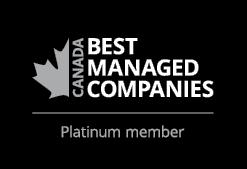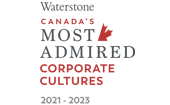As an employer, you're not just running a business; you also have the opportunity to improve your employees' financial futures. While the primary responsibility for retirement planning rests with your employees, your support can be transformative. By offering tools, guidance, and matching contributions, you empower them to make informed choices to secure their financial future. Investing in your employees' financial futures is an investment in the overall success of your organization.
Help your employees understand sources of retirement income
Helping your employees understand where their retirement income will come from is essential. By familiarizing them with the various sources of retirement income, you can help empower them to make more informed financial decisions. From government programs like the Canada Pension Plan (CPP) and Old Age Security (OAS) to employer-sponsored initiatives and personal savings, a comprehensive approach ensures financial security during retirement.
If an individual starts receiving their pension in 2024 at age 65, their maximum monthly CPP payout is $1,364.60.1 This amount represents the highest benefit you can receive if you’ve contributed the maximum to CPP throughout your working years. However, in January 2024, Canadians received an average monthly CPP payment of $831.92.2 The average payment is lower because not everyone maximizes their CPP contributions over their entire working life. Various factors can contribute to a lower CPP payment, such as being new to Canada, taking extended leaves from the workforce, or periods of unemployment.
Retirement and savings plans tailored to your organization's needs.
The OAS pension is a monthly payment for Canadians aged 65 and older. The OAS amount is determined by factors such as age (65 or older), the duration of residency in Canada after age 18, and income. In 2024, the OAS maximum monthly payment is $713.34 for individuals aged 65 to 74.3 If you are 75 or older, the maximum payment increases to $784.67.4 However, it's important to note that the combined amounts from CPP and OAS may not adequately cover day-to-day expenses, let alone other retirement aspirations.
Retirement savings are important to supplement income from government programs and ensure your employees have enough money to do what they love during their retirement. This is done by maximizing their group program and saving additional amounts in their personal accounts.
Employer matched contributions
Group retirement savings plans, such as Registered Retirement Savings Plans (RRSPs), allow employees to invest in their financial future. Employers can enhance their employees' savings efforts with a matching program. For example, if your employee contributes 5% of their salary to the plan, your company can match it with another 5%. External organizations typically administer these programs, which are exclusively available to employees within your company. Employer-matched contributions create a win-win scenario – employees will save money for retirement more effectively, and organizations attract and retain top talent by offering valuable retirement benefits as part of the overall compensation package.
Understanding the implications of early withdrawals
When it comes to retirement planning, one key objective is to defer taxes until funds are withdrawn during retirement years. But there are important considerations to keep in mind, too.
Employees who contribute to an RRSP or a pension allocate funds for long-term growth. They won't regain their contribution room if they withdraw from these registered products early, so any withdrawals reduce the contribution room available for future years.
Tax implications exist when your employees withdraw funds from your RRSP or pension. The withholding tax, as set out by the Canada Revenue Agency (CRA), applies to these withdrawals, and they must declare the withdrawn amount as revenue for the year it was taken out.
Let's consider a 30-year-old plan member who earns $50,000 annually with $20,000 already saved. This plan member contributes 10% of their earnings to their RRSP, withdraws $5,000 at age 30, and has an estimated 5% net rate of return. By withdrawing $5,000 early from their RRSP, their final savings amount is $525,401.76 after about 33 years. However, if the plan member decides not to withdraw $5,000, their savings grow to $551,668.50. By prematurely withdrawing $5,000 from their RRSP, the plan member misses out on $26,266.74 in growth and potential tax savings.5
Become a retirement planning champion
As an employer, champion responsible retirement planning at your workplace with these key takeaways.
- Consistency matters. Even small, regular contributions help your employees build wealth over time.
- Start contributing early. The earlier your employees contribute, the more time their investments have to grow.
- Leverage tax-advantaged accounts. Your employees should reap the benefits of tax-advantaged retirement accounts.
- Adjust as they go. As your employees’ financial situation improves, they should consider increasing their contributions incrementally.
Remember, every dollar saved today has the potential to grow into a substantial nest egg tomorrow. For example, over a 25-year period, contributing $50 more monthly can grow to $29,287, and $175 more monthly can grow to $102,504.6 These numbers are based on contributions invested monthly, earning a 5% return over 25 years. Whether it's $50 or $175, these small additional contributions can significantly impact your employees’ financial futures. While it's tempting to tap into retirement savings early, remember that doing so comes at a cost. Employees should think twice before withdrawing funds early—their future selves will thank them.
At Cowan, we offer Make Sense, a service that helps your employees navigate the complexities of their workplace retirement plan. Make Sense is complimentary, confidential, and available to all company retirement plan members, regardless of class or division. If your employees have questions about making additional monthly contributions or are considering withdrawing, our team can help.
Sources
- Government of Canada. (April 2, 2024). Canada Pension Plan - Overview. Retrieved from URL. ↵
- Government of Canada. (April 2, 2024). Canada Pension Plan - Overview. Retrieved from URL. ↵
- Government of Canada. (April 2, 2024). Old Age Security. Retrieved from URL. ↵
- Government of Canada. (April 2, 2024). Old Age Security. Retrieved from URL. ↵
- Manulife. (September 2020). Do you know what it costs you to take money out of your RRSP? [Infographic]. ↵
- Manulife. (November 2020). Give your retirement plan a nudge. [Infographic] ↵

-min.jpg?width=400&name=MFA_Blog%20(1)-min.jpg)
-min.jpg?width=400&name=AJ%20Feltis%20(1)-min.jpg)
-min.jpg?width=400&name=Healthy_Workplace_Blog%20(1)-min.jpg)

